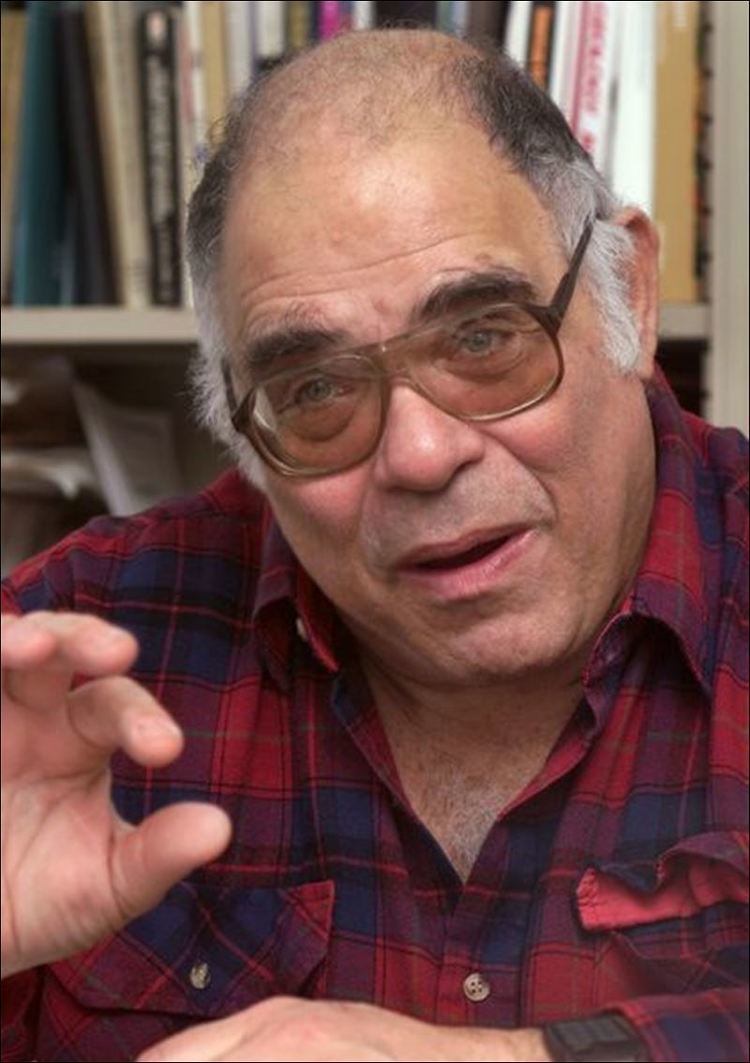Nationality American Role Author Fields Anthropology | Doctoral advisor Eugene Giles Academic advisor Eugene Giles Name Milford Wolpoff | |
 | ||
Notable awards Darwin Lifetime Achievement Award (2011)W.W. Howells Book Prize (1999) Education University of Illinois at Urbana–Champaign Residence Chelsea, Michigan, United States Books Race and human evolution, Modern Human Origins Notable students Tim D. White, Mary Doria Russell, John D. Hawks | ||
Milford Howell Wolpoff is a paleoanthropologist working as a professor of anthropology and adjunct associate research scientist, Museum of Anthropology, at the University of Michigan. He was born in 1942 to Ruth (Silver) and Ben Wolpoff, in Chicago. He is the leading proponent of the multiregional evolution hypothesis that attempts to explain the evolution of Homo sapiens as a consequence of evolutionary processes within a single species. He is the author of Paleoanthropology (1980 and 1999 eds.) and the co-author of Race and Human Evolution: A Fatal Attraction, which reviews the scientific evidence and conflicting theories about how human evolution has been interpreted, and how its interpretation is related to views about race.
Contents
- Education
- Professional Work
- Multiregional evolution and the punctuated equilibrium theory
- Awards and Honours
- Books and monographs
- Magazines and films
- References
He is best known for his vocal support of the multiregional model of human evolution when it was challenged by the 'Out of Africa' theory. The basis for advancing the multiregional interpretation stems from his disbelief in punctuated equilibrium (the idea that evolutionary process involves long static periods and abrupt changes rather than gradual modification during speciation) as an accurate model for Pleistocene humanity, noting that speciation played a role earlier in human evolution.
Education
Wolpoff received an A.B. in 1964 with a major in anthropology and a minor in mathematics, and a Ph.D. in 1969 in physical anthropology, with minors in zoology and archaeology, from the University of Illinois in Urbana, Illinois. His research advisor and intellectual mentor was Eugene Giles. He joined the faculty of the University of Michigan in 1971, and became a professor of anthropology in 1977.
Professional Work
Wolpoff was trained primarily as a paleoanthropologist at the University of Illinois under Eugene Giles. With his multidisciplinary training, he brings to the study of the human and non-human primate fossil record a background that combines evolutionary theory, population genetics, and biomechanics. With over 50 grants funded by the National Science Foundation, National Academy of Sciences, and the University of Michigan, Wolpoff has visited the museums where human and primate fossils are stored and has studied in detail and at length all the materials addressing the fossil evidence for human evolution across Europe, Asia, and Africa. His research foci have included the evolution and fate of the European Neandertals, the role of culture in early hominid evolution, the nature and explanation of allometry, robust australopithecine evolution, the distribution and explanation of sexual dimorphism, hominid origins, the pattern and explanation of Australasian hominid evolution, the contributions and role of genetics in paleoanthropological research, and the taxonomy of the genus Homo. In addition, he is a primary describer of many hominid fossil remains. Since 1976 Wolpoff has graduated more than 20 Ph.D students.
Multiregional evolution and the punctuated equilibrium theory
Drawing on this background and research experience, Wolpoff's continuing research for the last 15 years has been the development, articulation, and defense of his multiregional model of human evolution. He suggests that after an African origin of Homo sapiens (including Homo ergaster/Homo erectus) and the subsequent migration of H. erectus throughout much of the globe with the exception of the Americas, local evolutionary events took place across the world (Africa, Europe, Asia, and when they were advantageous, they spread everywhere else. According to Wolpoff, populations of Homo evolved together as a single species. Change in Pleistocene populations did not involve speciation (the splitting of one species into two): all this time, the geographically distinct populations maintained small amounts of gene flow. This idea directly challenges the Out of Africa model, which claims Homo sapiens evolved recently as a new species in Africa, and then dispersed throughout the Old World, replacing the existing human populations without mixing with them.
His theory evoked bitter rivalry with the proponents of punctuated equilibrium, Stephen Jay Gould and Niles Eldredge, who endorsed H. erectus as a model of their theory. In an earlier example of punctuated evolutionpreceding the global diffusion of Homo sapiens genes from Africa, some two million years ago, Wolpoff points to evidence of an earlier 'genetic revolution' that took place in a small group isolated from australopithecine forebears. "The earliest H. sapiens remains differ significantly from australopithecines in both size and anatomical details," he notes, "Insofar as we can tell, these changes were sudden and not gradual."
Awards and Honours
Wolpoff is a member of many anthropological organizations, and is an Honorary Life Member of the Honor Society of Phi Kappa Phi, a Fellow of the American Association for the Advancement of Science (in 2001) and Fellow of the American Anthropological Association. Some notable awards are
Books and monographs
His work with Rachel Caspari, Race and Human Evolution earned them the W.W. Howells Book Prize in 1999. Besides these, he has published 5 other books, 160 papers, and 22 book reviews, has presented numerous lectures and meetings papers, and has had many interviews and video appearances.
Magazines and films
Wolpoff has also appeared in The New York Times, New Scientist, Discover, and Newsweek. He has appeared in numerous video documentaries, notable ones include
